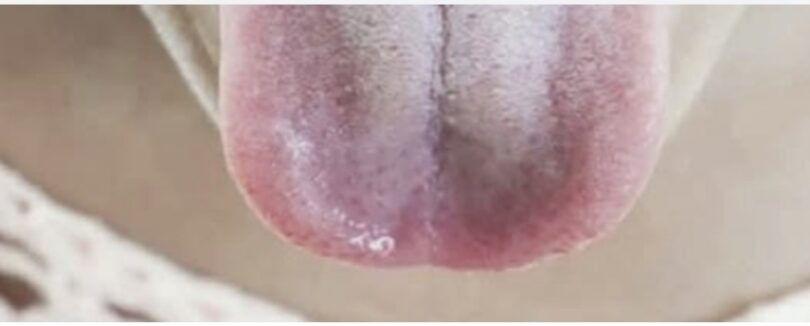map-like appearance. The exact cause is unknown, but it’s thought to be linked to stress, hormonal changes, or vitamin deficiencies.
What You Can Do:
While geographic tongue doesn’t require treatment, avoiding spicy or acidic foods may reduce discomfort. If symptoms worsen or persist, consult a healthcare provider.
7. Lichen Planus
Lichen planus is an inflammatory condition that can affect the skin and mucous membranes, including the mouth. On the tongue, it may present as lace-like white lines or patches. Its cause is unclear, but it’s believed to involve an immune system response.
What You Can Do:
If you suspect lichen planus, visit your doctor or dentist for diagnosis and management. Treatments may include corticosteroids or other medications to alleviate symptoms.
8. Syphilis
In rare cases, a white tongue may be a sign of syphilis, a sexually transmitted infection caused by the bacterium Treponema pallidum . One of its early oral manifestations is a painless sore or patch on the tongue.
What You Can Do:
If you have unprotected sexual contact and notice unusual symptoms, including a white tongue, seek testing and treatment immediately. Early-stage syphilis is treatable with antibiotics.
9. Nutritional Deficiencies
Deficiencies in certain vitamins and minerals, particularly B vitamins (like B12), iron, or folate, can contribute to a white tongue. These nutrients play vital roles in maintaining healthy mucous membranes and preventing inflammation.
What You Can Do:
Ensure a balanced diet rich in fruits, vegetables, lean proteins, and whole grains. If dietary adjustments aren’t enough, consider taking supplements under the guidance of a healthcare provider.
10. Other Systemic Conditions
A white tongue can occasionally signal systemic issues such as autoimmune diseases, gastrointestinal disorders, or even HIV/AIDS. In these cases, the tongue’s appearance may be accompanied by additional symptoms like fatigue, weight loss, or recurrent infections.
What You Can Do:
If you experience persistent or worsening symptoms alongside a white tongue, consult a healthcare professional for comprehensive evaluation and testing.
When to See a Doctor
While many cases of a white tongue are temporary and harmless, certain signs warrant immediate medical attention:
Persistent white patches that don’t go away after two weeks
Pain, swelling, or bleeding in the mouth
Difficulty swallowing or speaking
Unexplained weight loss or fever
Early diagnosis and treatment are key to addressing any underlying health concerns effectively.
A white tongue is often nothing more than a temporary inconvenience, easily resolved with improved oral hygiene or lifestyle changes. However, it’s important to listen to your body and recognize when it might be trying to tell you something more significant. By staying informed about the possible causes and seeking timely medical advice when needed, you can take proactive steps toward better oral and overall health.
Remember, your tongue is a window into your well-being—don’t ignore what it might be saying!
Enjoy!







